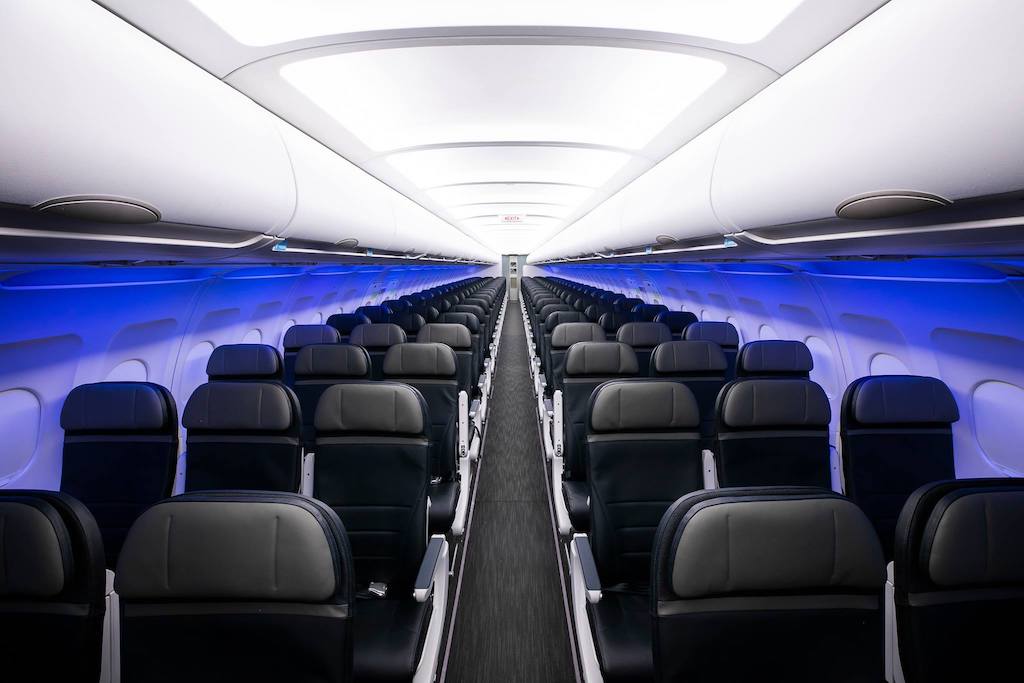Skift Take
Customers may not like so-called segmentation in airplane cabins. But almost every U.S. airline is using it to boost revenues.
Among larger U.S airlines, Alaska Airlines was one of the last carriers to take so-called segmentation seriously. But the airline has caught up, slicing and dicing its cabins to maximize revenue, executives said Tuesday on their fourth quarter earnings call.
Since 2017, Alaska has added several new products, including what it calls premium class, for extra-legroom seats that come with a few amenities, and Saver Fares, a bare-bones product with seats set aside in the back of the airplane. It also has invested in first class, putting more seats on larger jets, and adding the product on regional jets that previously were all-coach.
The results has been good for revenue. Before 2017, executives said, sales of first class seats accounted for about 7 percent of the company’s overall revenue mix. Now, sales of all premium seats, including the extra-legroom section, represent about 22 percent of overall revenues. That should grow this year, as the airline continues to retrofit Airbus jets with extra first class and premium seats.
Improved segmentation was a big reason Alaska had a strong 2019, even though it did not have all the aircraft it expected after federal regulators grounded the Boeing 737 Max. Alaska, which ordered 32 Max jets, was to take its first in June 2019. It was to have three by year-end.
Alaska reported net income of $769 million for 2019, significantly more than in 2018, when it reported $437 million. For the fourth quarter, the company’s net income was $181 million, up from $23 million a year ago.
Different Approach to Segmentation
While Alaska is focused on segmentation, it is more generous than its competitors with most of its products. At the low end, customers who buy basic economy still may choose a seat, though they have fewer options, and they can bring a larger carry-on bag.
At the higher end, Alaska tries to sell as many premium seats as it can while also ensuring enough are left for its loyalty members, who may upgrade to them for free.
“We’re intentional about how we manage our premium product business,” Andrew Harrison, Alaska’s chief commercial officer, told analysts. “Our goal is to keep our premium cabins affordable and provide generous benefits to our loyalty members while competing effectively against our peers.”
In the fourth quarter, Harrison said, first class revenue was up 19 percent on 13.6 percent more seats. Meanwhile premium class revenue was up 16 percent on 14.5 percent more seats. Harrison said revenue should continue to increase as the airline focuses on “more effective merchandising of our premium cabin.”
“It’s really about the upsell and growing that nicely,” he said.
Loyalty Bump
Harrison also leads the airline’s loyalty program, Mileage Plan, which remains more generous than many peer airline schemes. In addition to more upgrades, Alaska’s customers tend to earn more miles and have more favorable redemption rates than passengers at other airlines.
The plan is working, Harrison said, citing a “double digit growth” in loyalty revenues in the fourth quarter. Revenue comes from commissions from co-branded credit cards and revenues from frequent flyer redemptions, which show up as passenger revenue.
Max Woes
Alaska executives admitted they don’t know when the Max will fly, saying they read Boeing’s recent release about a mid-2020 return just like everyone else. The airline was to receive as many as 10 Max jets this year, executives said, but no one is sure how many will come, or when they will be delivered.
Alaska has been bullish on the Boeing 737 Max 9, the second-largest Max jet in production, to help it lower its unit costs. Larger airplanes are generally cheaper to operate, on a per seat basis, than smaller ones.
The airline’s executives said they continue to want to retire smaller aircraft and replace them with larger ones, telling analysts they soon may place an order for more Boeing or Airbus narrow-body jets. Boeing long has been considered the front-runner — before Alaska acquired Virgin America it had an all-Boeing narrow-body fleet — but on Tuesday executives said they were open to both manufacturers.
“We’re looking at the MAX 9 and the MAX 10, looking at the A321neo,” said Nathaniel Pieper, senior vice president for fleet, finance and alliances at Alaska Airlines. “There’s going to be upgauge benefits for us with that, better cost performance, better revenue performance.
The airline is less enamored with the smaller Airbus jets, the A319 and A320, it inherited from Virgin America. But because of the Max saga, CEO Brad Tilden said the Alaska nonetheless may extend leases on some to avoid losing too much capacity.
The Daily Newsletter
Our daily coverage of the global travel industry. Written by editors and analysts from across Skift’s brands.
Have a confidential tip for Skift? Get in touch
Tags: airline passenger experience, alaska airlines, premium air travel
Photo credit: Alaska Airlines has overhauled its interiors to add more premium seats. Alaska Airlines
